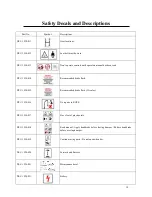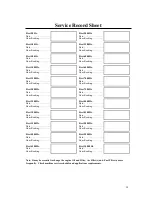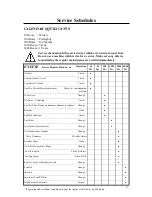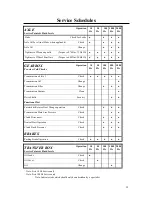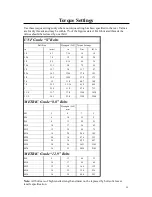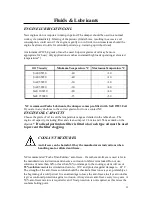
10
Technical Specifications
Angle Explanation
Insufficient preload of a bolted joint can cause major problems, such as cylinder head warp, leaking gasket
joints etc. There are several methods of achieving an accurate preload of a bolted joint, the two main methods
used on the JCB 444 engine are:
1)
Torque Control Tightening
2)
Angle Control Tightening
1)
Torque Control Tightening
Using a torque meter to control the torque is the most popular means of controlling preload, and in the
majority of instances this method is adequate. It should be noted that with this process, the majority of
the torque is used to overcome friction, therefore slight variations in the frictional conditions can lead to
large changes in the bolt preload.
2)
Angle Control Tightening
Where a more precise preload is required, the ‘ angle’ tightening method is used. The bolt is
tightened to a predetermined torque (this may be done in stages), and then as a final sequence, the bolt is
tightened to a predetermined angle - this method of tightening the bolts results in a similar variation in
the final preload.
It is critical that the predetermined tightening angle is accurately achieved, failure to tighten accurately
to the specified angle could result in the bolt preload being incorrect - this will lead to eventual failures.
It is good practice to replace all bolts that have been tightened using + angle procedure.
Angle Tightening Procedure
The following example explains the recommended angle procedure. A
Torque angle gauge should be used for accuracy, but as a visual check, the bolts can
Be match marked as described below.
1
Tighten the bolt to the specified torque ( specified torque values will be detailed
in relevant sections.)
2
Mark a line across the centre of the bolt, and a second line on the part to be
clamped - the two lines should be aligned, as shown in
A
3
Mark a third line at the specified torque angle - in this instance the additional
torque angle is 90°. This line must be marked the specified angle in a clockwise
direction (to further tighten the bolt), as shown in
B
4
In some instances, angle torque tightening can be specified in two stages, for
instance in this example, the first angle quoted is 90° (shown at
B
), and then a
second angle of 180°. The additional 180° angle is from the LAST tightened
positioned - as shown at
C
.
5
Tighten the bolt so that the line on the bolt aligns with the angle(s) marked on
the item to be clamped - remember, to ensure complete accuracy an angle
gauge should be used.


















